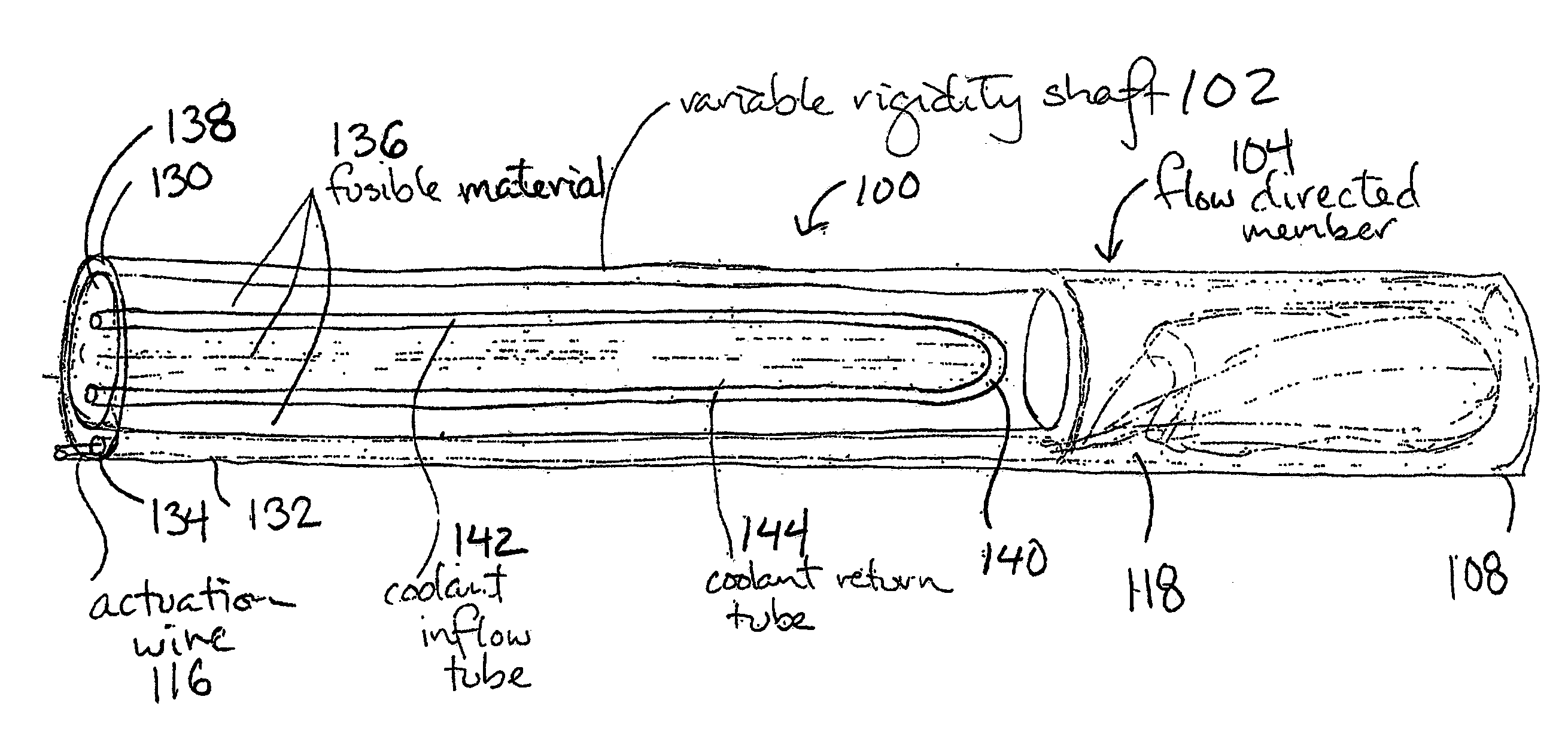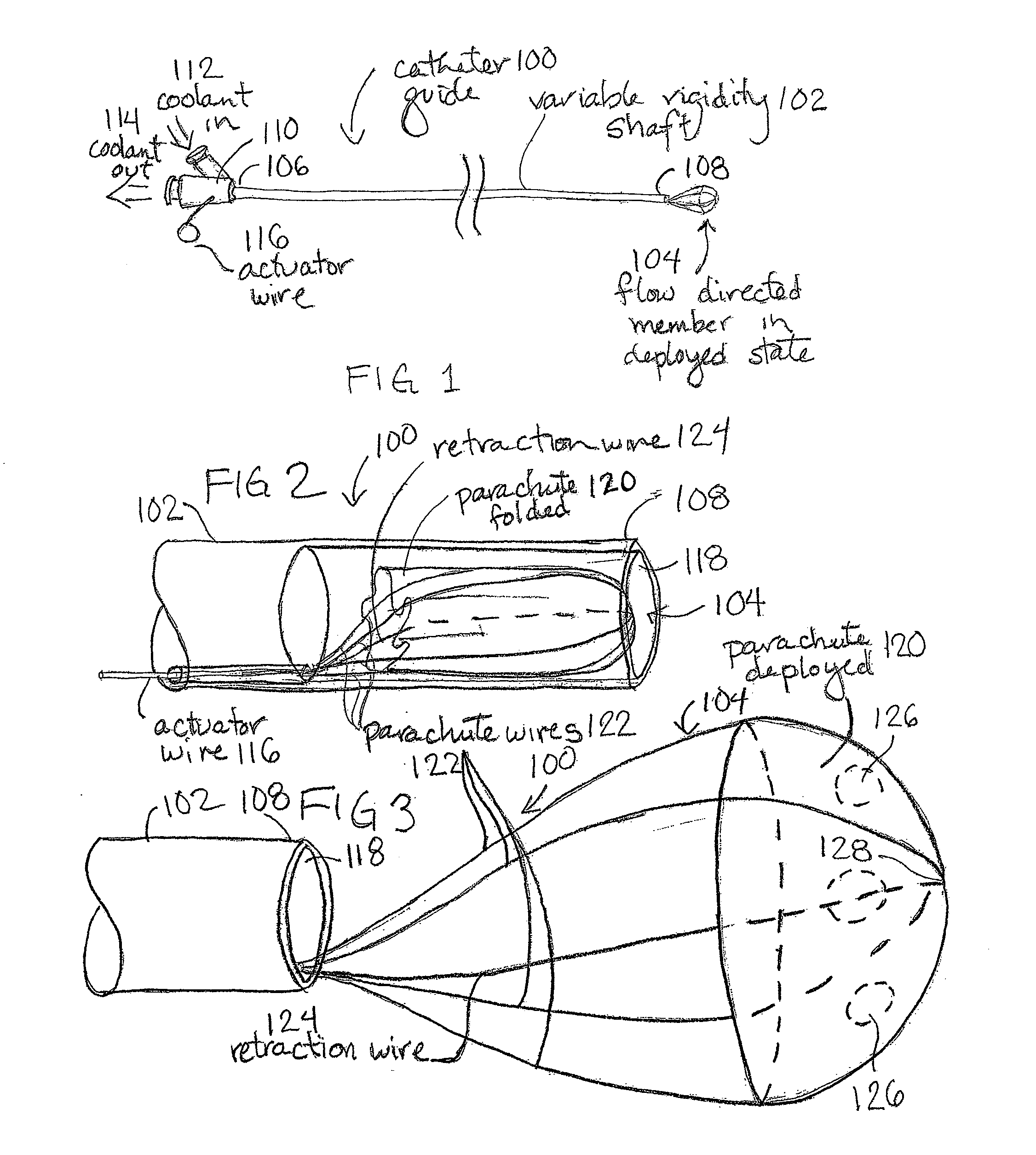Flow-directed catheter guide with variable rigidity shaft
a catheter guide and variable rigidity technology, applied in the field of catheter guides, can solve the problems of incompatibility between two requirements, insufficient rigidity of flexible catheter guides, and extremely problematic, and achieve the effect of facilitating the withdrawal of catheter guides
- Summary
- Abstract
- Description
- Claims
- Application Information
AI Technical Summary
Benefits of technology
Problems solved by technology
Method used
Image
Examples
Embodiment Construction
[0020]FIG. 1 shows a flow-directed catheter guide 100 with a variable rigidity shaft 102 constructed according to the present invention. The catheter guide 100 has an elongated shaft 102 with a proximal end 106 and a distal end 108. At least a distal portion of the catheter guide shaft 102 is constructed as a variable rigidity shaft. The distal end 108 of the catheter guide 100 has a flow-directed member 104, which is shown in a deployed state. The proximal end 106 of the catheter guide 100 has a proximal fitting 110 with connections for inflow 112 and outflow 114 of coolant and an actuation wire 116 or the like for selectively actuating the flow-directed member 104. Optionally, the proximal fitting 110 may be removable from the elongated shaft 102.
[0021]Alternatively, the flow-directed member 104 described herein may be mounted on a catheter guide or catheter of more conventional construction. For example, the flow-directed member 104 may be mounted to the distal end of a conventio...
PUM
 Login to View More
Login to View More Abstract
Description
Claims
Application Information
 Login to View More
Login to View More - R&D
- Intellectual Property
- Life Sciences
- Materials
- Tech Scout
- Unparalleled Data Quality
- Higher Quality Content
- 60% Fewer Hallucinations
Browse by: Latest US Patents, China's latest patents, Technical Efficacy Thesaurus, Application Domain, Technology Topic, Popular Technical Reports.
© 2025 PatSnap. All rights reserved.Legal|Privacy policy|Modern Slavery Act Transparency Statement|Sitemap|About US| Contact US: help@patsnap.com



